Montana elk is a defining feature of the state’s wildlife. It’s known for its impressive size and iconic bugle or distinct call that rings through the wilderness. As one of the largest land mammals in North America, elk play a crucial role in the state’s ecosystem and culture.
This guide will explain the characteristics, population, and habitat of Montana’s elk. It will offer insights valuable to wildlife enthusiasts and those interested in nature. We’ll cover everything from the color of their coats to managing their ample populations.
- Related article: Montana’s Wildlife Sightings
Have you ever wondered how elk manage to survive and thrive across Montana’s diverse landscapes? They use different habitats throughout the year, showcasing their incredible adaptability. We’ll explore where you can find elk and reveal the secrets of their seasonal movements.
7 Key Takeaways on Montana Elk
- Montana has over 140,000 elk spread across vast habitats. This showcases the state as a leader in elk conservation and management.
- Understanding elk characteristics, such as their herding instinct, seasonal movements, and the significance of antlers, enriches wildlife enthusiasts’ experiences in Montana.
- Elk habitats in Montana range from ridges to valleys, offering insights into where and why elk choose specific locations for feeding, mating, and resting.
- Elk hunting in Montana is a significant cultural and wildlife management practice. The state supports this through carefully regulated hunting seasons and permit systems.
- For elk watchers, Montana provides unique opportunities in spots like Slippery Ann Wildlife Viewing Area and Elk Lake Resort. Here, elk can be observed in their natural, active states.
- Specific elk hunting districts in Montana, like the Snowy Mountains and South Little Belt Mountains, offer high success rates for hunters due to the abundance of elk.
- Gardiner area, near Yellowstone, stands out as a prime location for wildlife viewing, including elk, especially during the rutting seasons and in winter.
About Montana Elk
Montana is home to a thriving elk population, making it a prime destination for wildlife lovers. The state’s vast landscapes and diverse habitats provide the perfect home for these majestic creatures. This section will explain what makes Montana’s elk population unique, from their characteristics to their habitat.
Montana Elk Characteristics
| Characteristics | Description |
|---|---|
| Coat Color | Elk’s coat color ranges from brown to pale yellow, with older bulls having a darker color on their heads, necks, and legs. |
| Rump Patch | Elk rump patches are a distinctive yellowish to almost orange. |
| Mane/Ruff | Elk manes are longer in bulls than in cows. |
| Antlers | Bulls have impressive antlers, typically 5 tines on each side, weighing up to 40 lbs. |
| Weight | Bulls can weigh over 1,000 lbs. before the rut, with cows weighing 500 to 600 lbs. |
| Herding Instinct | Elk has a strong tendency to form herds led by older cows. |
| Seasonal Movement | Elk migrate to lower areas with better food and cover in winter. |
| Habitat Use | Elk habitats are significantly impacted by human presence. |
When you’re out in Montana’s wild, knowing the characteristics of elk can deepen your appreciation for these majestic creatures. Elk are the second largest deer species, known for their bugles, making them the loudest in the deer family.
Elk live for about 10-13 years in the wild, with bulls reaching their maximum size at around 7 years. Bull elk antlers play a crucial role during the mating season or rut in September and October.
Here are some important facts about the elk rut:
- Mating and Antlers – Larger antlers signal dominance and are attractive to females. Bulls use them to compete for and protect their harems.
- Bugling and Communication – Bulls bugle to attract mates and warn off rivals during the rut. This unique call also serves as a hunting partner, drawing elk closer to imitating hunters.
- Rivalry and Fighting – When two bulls’ bugling leads to a challenge, they engage in antler wrestling to establish dominance.
Elk are big, loud, and intricately adapted to their environment and social structures. Understanding these characteristics adds depth to any wildlife enthusiast’s experience in Montana.
Montana Elk Population
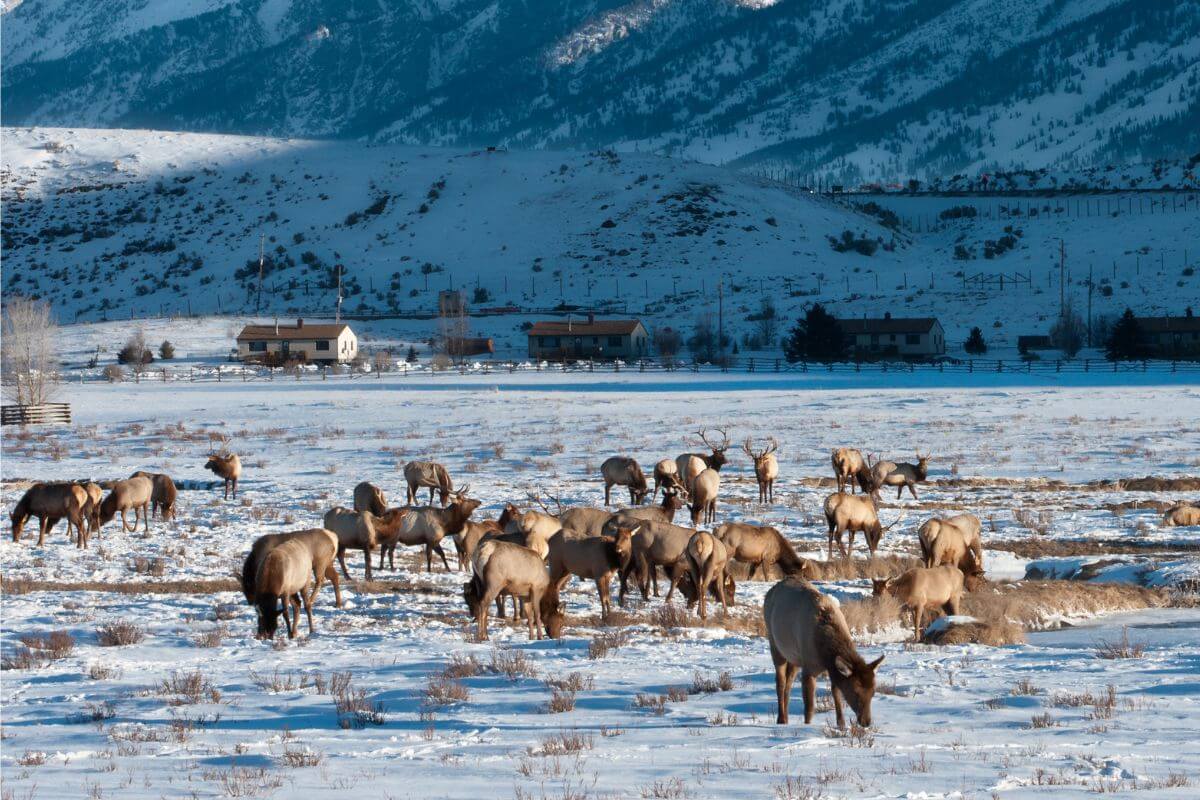
The story of Montana’s elk is a tale of resilience and careful preservation. These lands were once roamed by vast herds, but human expansion took its toll. Today, thanks to dedicated conservation efforts, Montana boasts one of the largest and most diverse elk populations in the United States.
Here’s a closer look at the numbers and the strategies that keep the elk thriving in the Treasure State:
- Historical Perspective – The U.S. was home to millions of elk, but westward expansion drastically reduced their numbers. With over 140,000 elk, Montana saw significant declines before leading the way in conservation.
- Geographical Distribution – Most of Montana’s elk, primarily Rocky Mountain elk with impressive antlers, are found in the state’s western and central regions.
- Conservation Efforts – The decline of elk and other wildlife in the 1800s sparked Montana’s conservation movement. Today, the Montana Fish, Wildlife & Parks (FWP) carefully manages the state’s elk population to ensure sustainability and prevent over-harvesting.
- Hunting and Management – The Montana FWP’s annual elk plan includes issuing permits to control hunting and maintain elk numbers at levels that support the ecosystem.
While the eastern parts of Montana have fewer elk today, regions like the Missouri Breaks are renowned for their trophy elk. This shows that elk populations can thrive with proper management and offer ample hunting opportunities.
Montana Elk Habitat
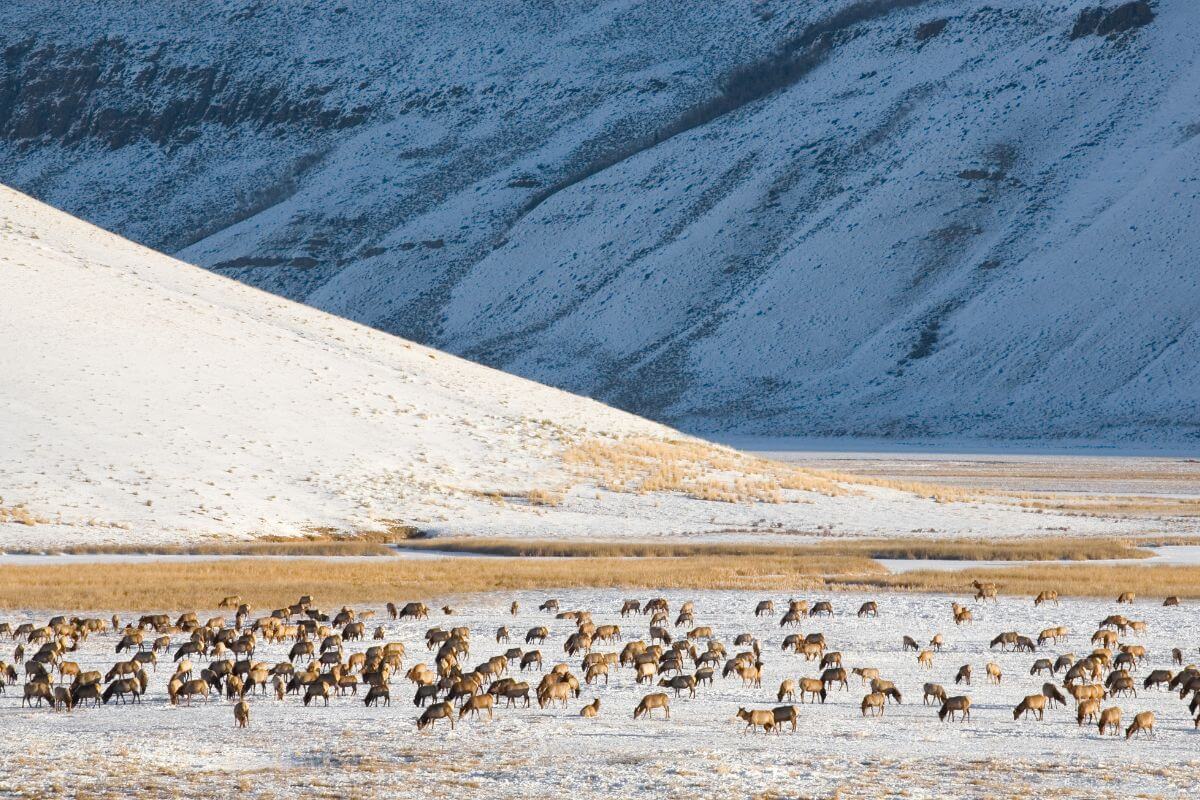
Montana is like a giant playground for elk, offering a variety of habitats that suit their needs. Whether it’s a cozy forest or a vast meadow, you’ll find elk where they can eat well, feel safe, and have a comfy resting spot.
Elk are masters of finding the best spots to eat. They love a mix of grass, leaves, and the occasional nibble on twigs and shrubs. In places with lots of trees, they look for sunny spots with plenty of greenery at their feet. This way, they can have a good meal, especially in the cool of the morning or evening.
Here are a few places you might spot elk in Montana, depending on the time of year and day:
- Ridges – Ridges are like elk highways, with many trees for cover. Elk use them to move from their eating spots in the grass to their comfy sleeping spots.
- Valleys – During the rut, quiet valleys with creeks are the place to be. The water and the wide, flat land give elk space and peace.
- Creeks – On hot summer days, elk chill in areas with lots of vegetation near creeks. It’s their way of beating the heat.
In summer, elk heads up to the high places where it’s cooler. But when winter comes, they move to lower spots with more trees to stay warm.
This guide will help wildlife enthusiasts understand where and why elk choose their habitats in Montana. It’s a peek into the lives of these amazing animals and the beautiful, diverse places they call home.
Montana Elk Hunting
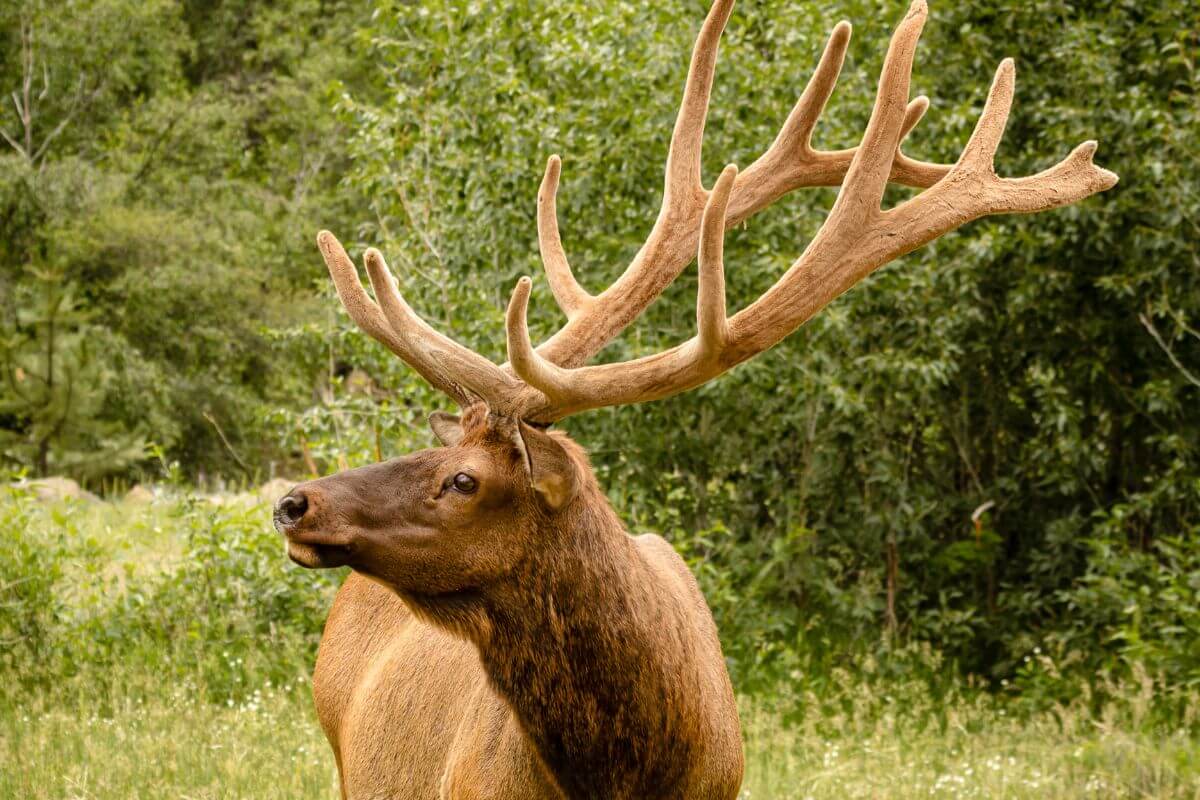
Montana’s elk hunting is a time-honored tradition and a significant part of the state’s culture. With vast and varied landscapes, Montana offers unique hunting experiences for both residents and non-residents.
This section provides an overview of elk hunting in Montana, including key regulations and top hunting districts. For more information, you can check out our complete guide to elk hunting in Montana.
General Overview of Montana Elk Hunting
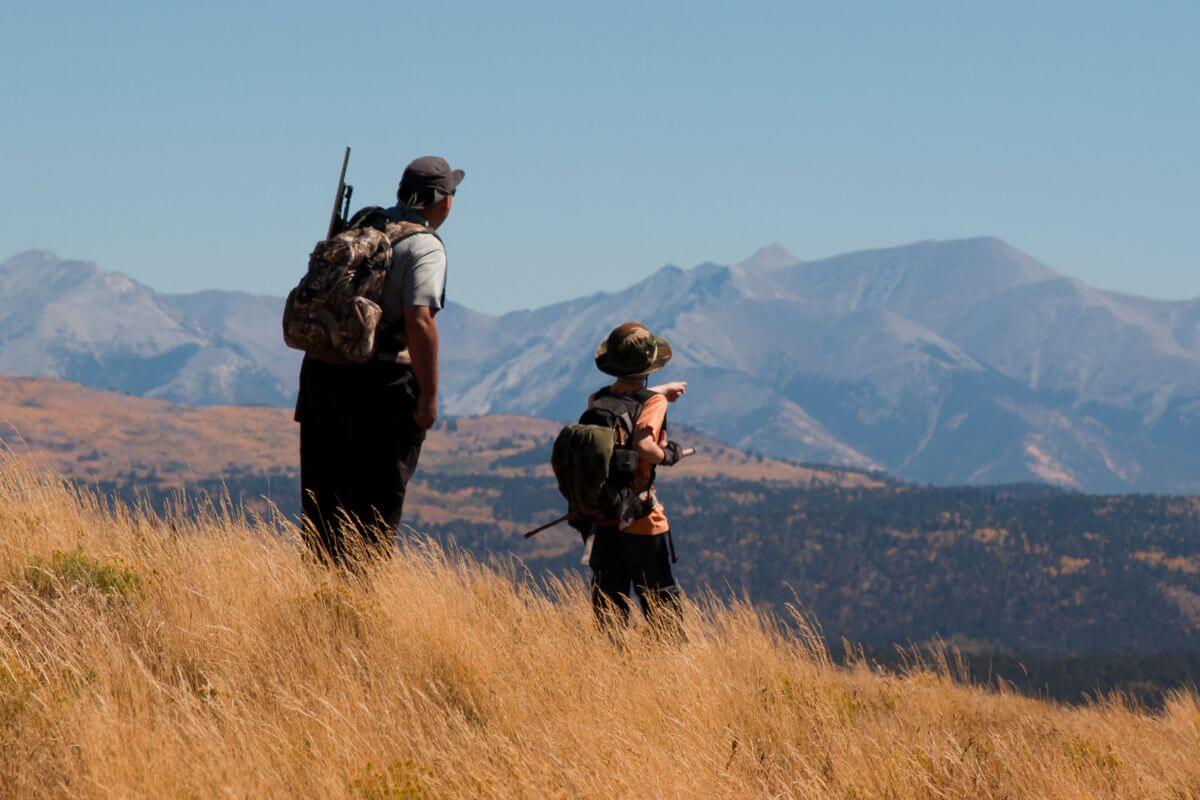
Are you thinking about going on an elk hunting trip or just fascinated by these game animals? Montana is a top spot for elk hunting, with the state having one of the largest elk populations in North America. In 2022, the state’s Fish, Wildlife & Parks Department counted over 141,000 elk.
For hunting enthusiasts, Montana is a dream. Whether you’re a resident or from out of state, getting an elk hunting permit here opens up a world of possibilities. The entire state is home to Rocky Mountain elk, from the towering mountains west to the rolling cedar hills east. This makes elk one of the big-game animals for hunters.
Here are some key points to remember when planning your elk-hunting adventure in Montana:
- Elk Hunting Permits – Both residents and non-residents are eligible. Non-residents must first draw a general over-the-counter license, giving them a chance at a special permit. Ensure you understand the hunting regulations and have the right permits for the area you plan to hunt, especially if it’s private land.
- Elk Hunting Seasons and Units – The state is divided into general and limited-entry units. The general units cover most of the state and offer over 12 weeks of hunting across archery, rifle, and muzzleloader seasons. Limited-entry units are more common in the east and can yield larger bulls, but they often require several years of waiting for a permit.
- Drawing Odds – While rifle permits can be difficult to obtain, especially in limited-entry units, most archery permits are available for non-residents every 3 to 5 years.
Montana’s hunting tradition is strong. The state works hard to balance this with elk conservation. This means knowing and respecting the rules, whether hunting on public lands or gaining access to private lands. It’s a place where a well-prepared hunter can have a truly memorable hunting experience.
Best Elk Hunting Districts in Montana
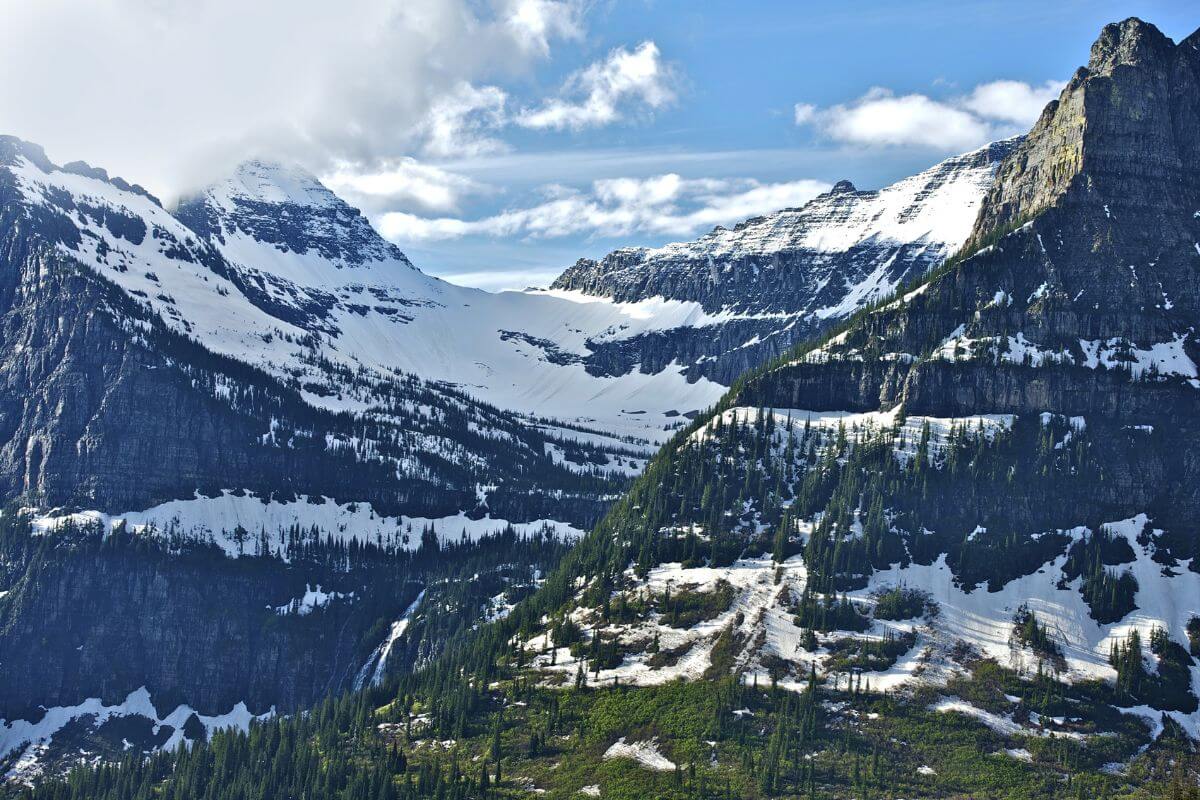
Due to Montana’s diverse landscape, elk hunting offers a variety of experiences. However, not all areas are equal when spotting these majestic creatures. In the eastern half of Montana, some districts have fewer elk but provide clear visibility in wide-open spaces. On the other hand, the western half is home to areas where elk thrive in large numbers, often concealed by dense evergreen forests.
Let’s look at some of the top elk hunting districts in Montana:
- District 411: Snowy Mountains – This district covers the northern part of the Snowy Mountains and the adjacent foothills. Despite being a less crowded hunting area, it boasts high numbers of elk herds. Over the years, it has maintained its reputation as a top producer in elk harvest quantity. Despite the hunting pressure, HD 411 has an elk harvest with a success rate of around 4%.
- District 393: East Bridger – Located just north of Bozeman and Livingston, this district in the Bridger Mountains is known for its large elk herds, particularly home to many impressive bulls.
- District 540: South Little Belt Mountains – Abundant in wildlife, this district ensures that those lucky enough to draw a tag will have a high chance of a successful hunt, offering a badass elk hunting experience.
Each of these districts presents a unique opportunity for average or experienced hunters. Whether you prefer the vast, open spaces of Eastern Montana or the challenge of spotting elk in the thick forests of the western region, there’s a big-game hunting district to suit every preference.
Best Spots for Montana Elk Watching
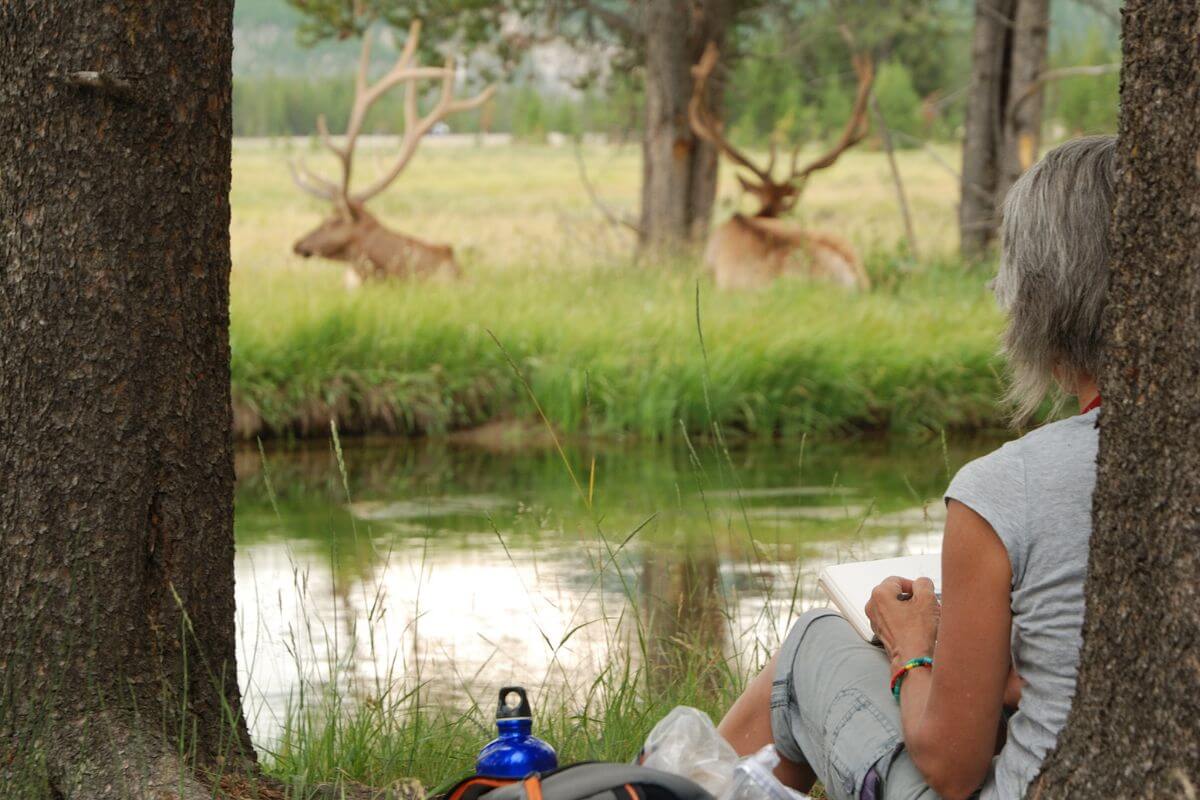
Finding the perfect spot to watch Montana’s majestic elk is a dream come true for any wildlife lover. The state offers a range of locations to observe these incredible creatures in their natural habitat. Each spot has charm and a unique story about the elk roaming the area. Let’s explore the best places in Montana for elk-watching.
Slippery Ann Wildlife Viewing Area – Best Spot for Elk Watching in the Fall
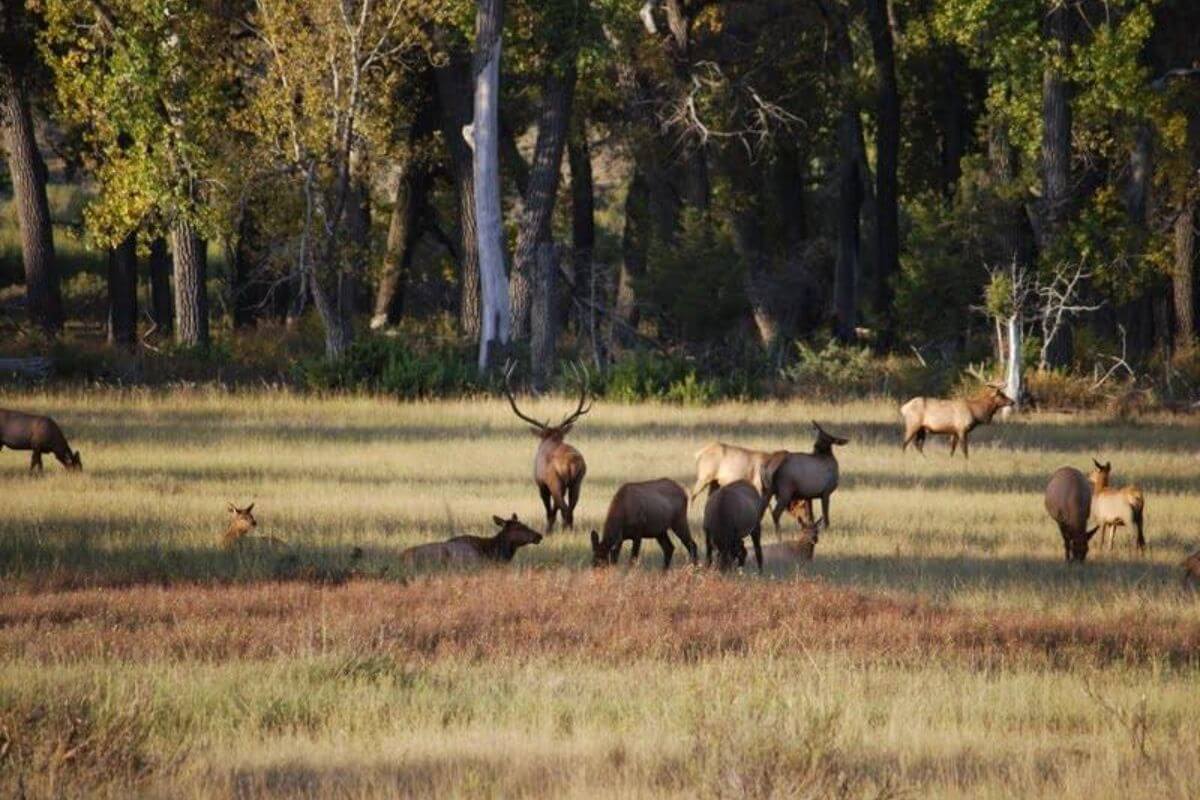
The Slippery Ann Wildlife Viewing Area at the Charles M. Russell National Wildlife Refuge is a must-see for elk enthusiasts. Here’s why:
- Abundant Elk – The area hosts hundreds of elk every fall as they go about their rutting season. This natural spectacle is a rare chance to see these majestic animals in their element.
- Scenic Self-Guided Tour – The viewing area is part of a scenic 20-mile (32.2 km) self-guided tour. It’s easy to access from Highway 191 and offers a close look at the elk and breathtaking landscape.
- Historic Landmarks – The tour route is on a gravel road beside the Missouri River, which gives you a glimpse of historic sites like Lewis and Clark’s campsite.
This tour is a dream come true for wildlife lovers. You will see elk herds at their most active in a setting of natural beauty and historical significance.
Gardiner Area – Elk and Other Wildlife Watching
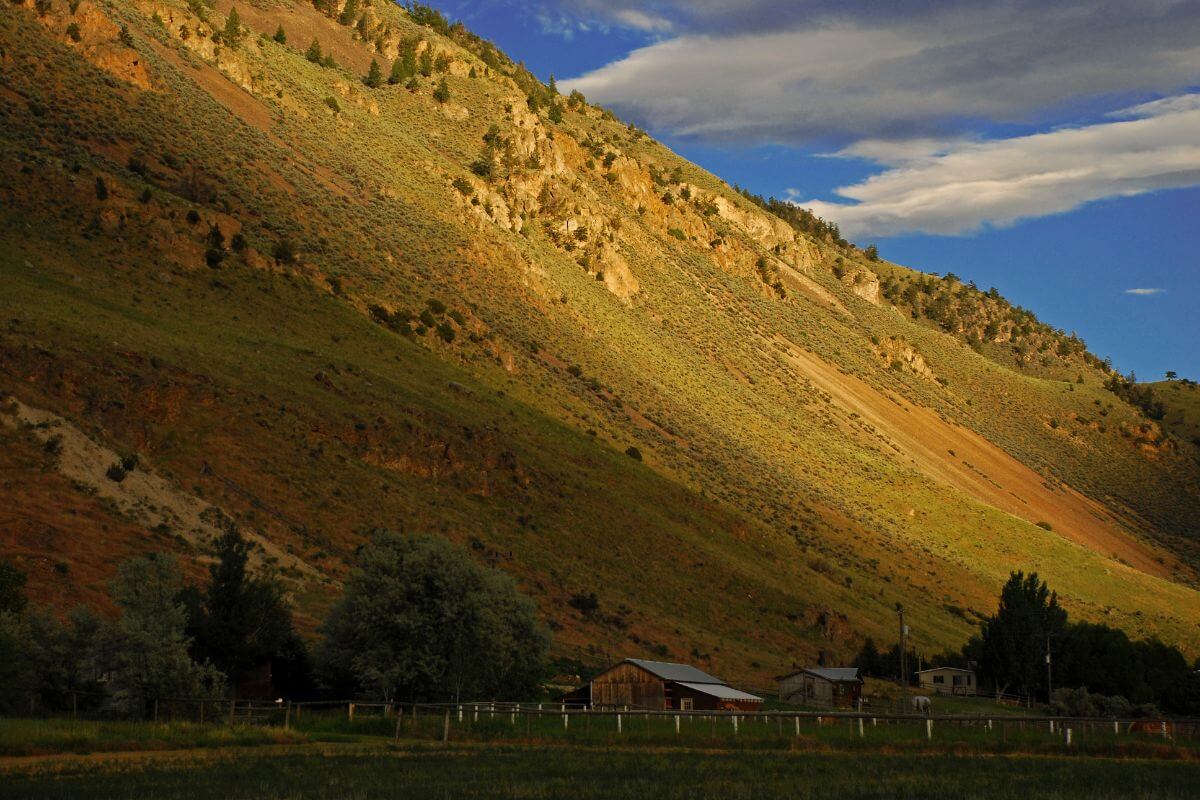
The Gardiner area is a wildlife enthusiast’s dream come true. It’s right at the north entrance of Yellowstone National Park. This spot and the Yellowstone Northern Range are famous for offering some of the best wildlife viewing in the lower 48 states.
Gardiner is called Nature’s Favorite Entrance to Yellowstone for good reason. Wildlife isn’t just in the park, it’s all around you. The town is a pathway where animals such as wolves, elk, bison, and bears roam freely. It’s a unique place to watch nature’s beauty without going far.
Just a short drive away is Yellowstone’s Lamar Valley. People call it “the Serengeti of North America” because of its rich wildlife. If you want to see animals, the best times are dawn and dusk. That’s when they’re most active.
In late summer and fall, witness the bison rut in Lamar Valley and the elk rut in Gardiner and Mammoth Hot Springs. In winter, the snow-covered landscape makes it easier to spot animals against the white background, making it a great time for wildlife watching.
This area is home to diverse wildlife, including the elusive mountain lion. While they’re not easy to spot, the Gardiner area’s natural beauty and abundant prey make it a suitable habitat for these magnificent creatures. If you’re lucky, you might glimpse one during your visit.
Elk Lake Resort – Elk Watching With Water Fun
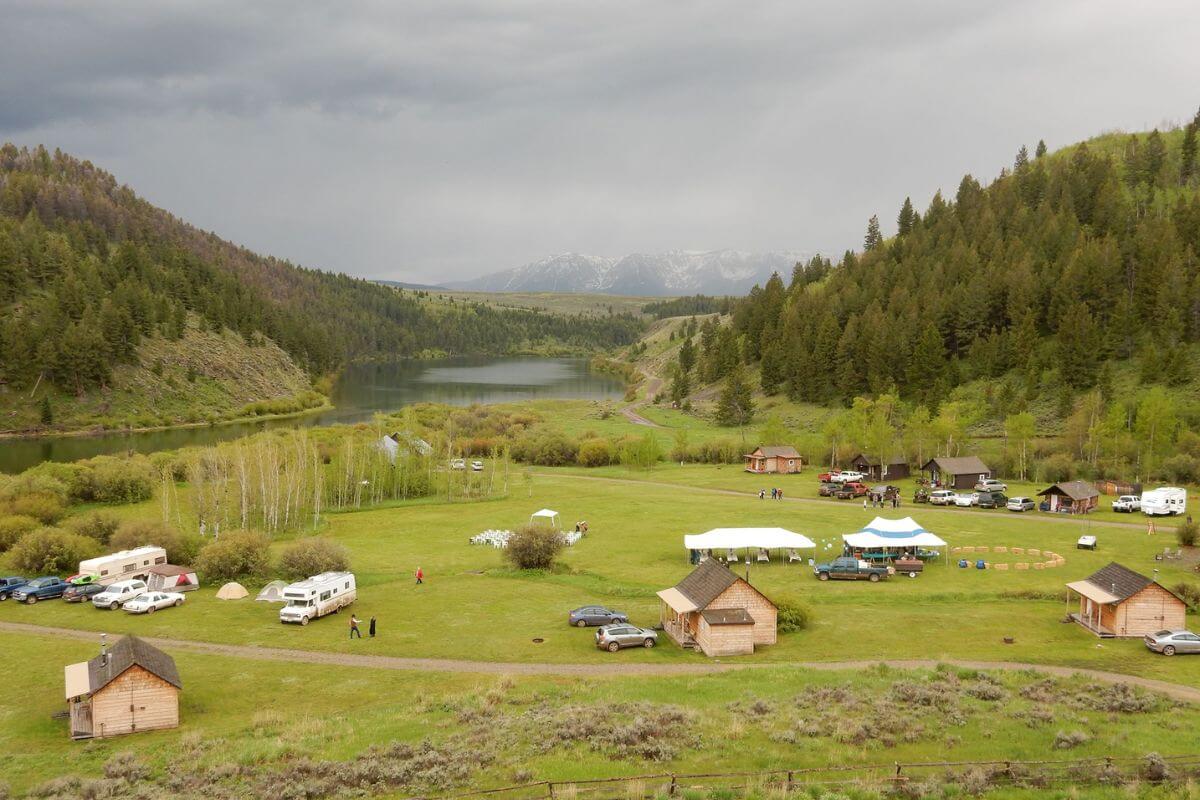
Elk Lake Resort is a hidden gem for those who love wildlife, sitting in the heart of Montana’s nature. It’s where the wild comes to you, located 40 miles (64.4 km) west of West Yellowstone.
This resort is not your average getaway, it’s right at the edge of the Red Rocks Lakes National Wildlife Refuge, surrounded by the Beaverhead-Deerlodge National Forest and the Centennial Valley. The setting is both breathtaking and secluded.
Here, you get a front-row seat to nature’s show. The area is teeming with life, boasting almost every species you’d find in Yellowstone National Park, except bison. Seeing a view where the residents include everything from tiny rodents to majestic elk and deer is a wildlife enthusiast’s dream.
Let’s take a look at who shares this vast, undeveloped habitat with Montana’s elks:
- Carnivores – Carnivores are at the top of the food chain, from bears to foxes. Keep your bear spray handy, as you might spot Black Bears, Grizzly Bears, and other fascinating predators.
- Ungulates – Ungulates are hoofed animals. Elk Lake is home to a variety of them, like Elk, Mule Deer, and Moose.
- Rodents – Don’t underestimate the role of rodents in the ecosystem. You’ll find a diverse range here, from squirrels to voles and beavers.
- Rabbits, Pikas, Hares – Rabbits, hares, and pikas are small mammals that are part of Elk Lake, adding to its diverse animal community.
- Bats and Birds – With 271 bird species, including impressive ones like the bald eagle and various bats, the skies and nights are as lively as the days.
Elk Lake Resort isn’t just a place to stay, it’s an experience. You get to witness nature up close, far from the beaten path. Whether you’re an avid wildlife observer or just someone who appreciates the beauty of the outdoors, this resort offers something special.
Montana Elk Final Thoughts
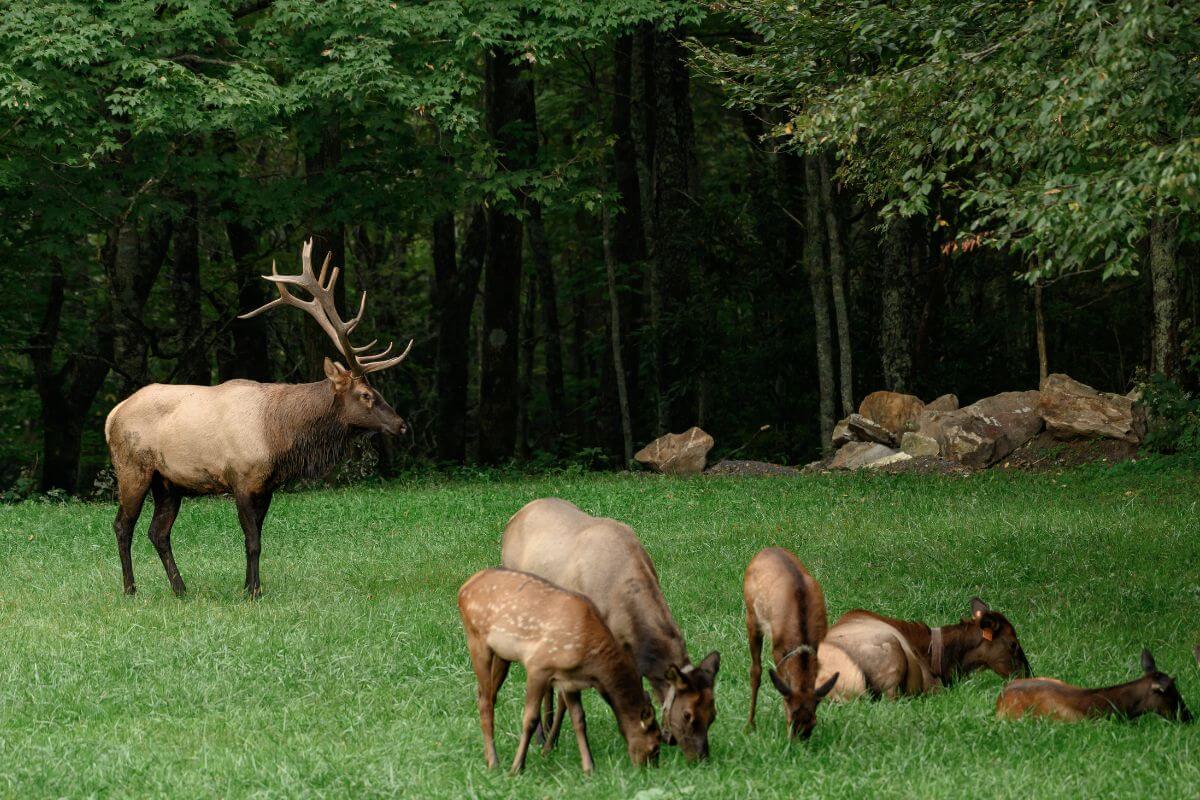
Montana’s elk are part of the landscape and a testament to the state’s dedication to conservation and wildlife management. With over 140,000 elk roaming vast and varied habitats, Montana is a leader in preserving this iconic species.
Understanding elk’s unique characteristics and preferred habitats enhances the experience for observers. Whether you’re watching elk at Slippery Ann Wildlife Viewing Area or Elk Lake Resort, Montana provides exceptional opportunities for elk enthusiasts.
Hunting elk in Montana is a tradition deeply rooted in respect for nature and is regulated to ensure the sustainability of elk populations. From the challenge of spotting elk in dense forests to the clearer views of open hunting districts, Montana caters to various hunting preferences.
The state’s careful balance of conservation and hunting practices highlights the ongoing success of elk management. This makes Montana a destination that honors both the past and the future of elk.
Montana Elk FAQs
1. What Kind of Elk Are in Montana?
The Rocky Mountain elk (Cervus canadensis nelsoni) is the predominant elk species in Montana. These elk are a subspecies of the North American elk and are found throughout the Rocky Mountains region, including Montana.
2. How Much Does It Cost to Hunt Elk in Montana?
The cost to hunt elk in Montana varies depending on several factors, including whether you are a resident or nonresident, the type of elk license you obtain, and whether you choose to hunt on public or private land.
Elk hunting licenses for residents typically range from around $20 to $25 for general licenses. Depending on the license type, the cost is significantly higher for non-residents, ranging from several hundred to over a thousand dollars.
3. Can Anyone Hunt Elk in Montana?
In Montana, both residents and nonresidents can hunt elk, but they must obtain the necessary licenses and follow regulations set by the Montana Fish, Wildlife & Parks Department. Residents typically have easier access to hunting licenses and may pay lower fees than nonresidents.
4. What Is the Elk Behavior in Montana?
Elk behavior in Montana varies depending on the season, habitat, and social dynamics within elk herds. During summer, elk often congregate in higher-elevation areas where forage is abundant.
As the weather cools in the fall, elk begin their annual rut, or mating season, which involves bulls competing for dominance and breeding rights. Increased vocalizations, displays of aggression, and the formation of harems by dominant bulls mark this period.
5. Does Montana Have Big Elk?
Montana is known for its large elk. The state’s diverse habitats, including expansive forests, rugged mountains, and vast grasslands, provide ample food and cover for elk populations to thrive and grow to impressive sizes.
Experience the charm of Montana through these excellent reads:
- Montana Duck Guide
- Types of Deer in Montana
- Montana’s Endangered Animals
- Invasive Species in Montana
- https://fwp.mt.gov/conservation/wildlife-management/elk
- https://fwp.mt.gov/hunt/regulations/elk
- https://fieldguide.mt.gov/speciesDetail.aspx?elcode=AMALC01010
- https://www.facebook.com/photo?fbid=1063721773650702&set=slippery-ann-campgroundhttpsfreecampsitesnetslippery-ann-campgroundthis-is-a-pop
- https://www.flickr.com/photos/tmview/3718987886/
- https://www.facebook.com/photo/?fbid=504270911503349&set=a.504270898170017

